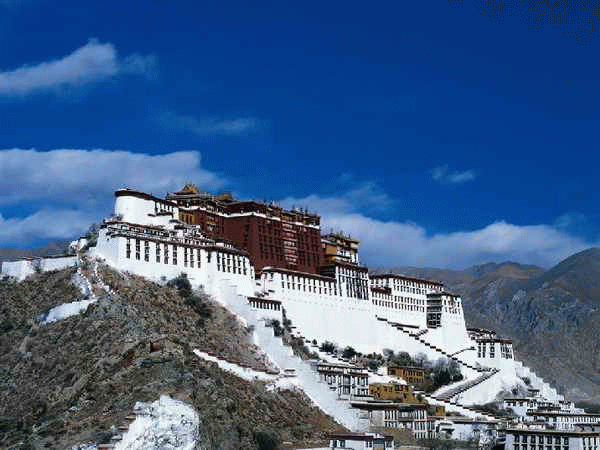
As the capital of the People's Republic of China, Beijing is located in northern China, close to Tianjin Municipality and partially surrounded by Hebei Province. The city covers an area of more than 16,410 square kilometers (6,336 square miles) and has a population of 14.93 million people.

Beijing is a city with four distinct seasons. Its best is late spring and autumn. But autumn is taken as the golden tourist season of the year since there is sometimes in the spring of recent years, a yellow wind. We suggest tourists visit Beijing during the months of May, September, and October when people can enjoy bright sunshine and blue skies. An abundance of international class performances are presented in May. If you like winter, you will have other chances to appreciate another landscape of Beijing. After skiing in Beihai and viewing the snowy sights on West Hill, enjoying the steaming hotpot is the best choice, which is really the fun of tour in Beijing. Please keep warm and remember to bring your down garments and sweaters when you visit Beijing in the winter.


Shanghai, Hu for short, is situated on the estuary of Yangtze River, a position that led to frequently unwelcome intervention from foreigners seeking to impose their exports on the Empire during the nineteenth century. However, in the 1920s and the 1930s, Shanghai became an important international trade center. With its advantaged natural conditions, rapid development and splendid oriental culture, Shanghai was famed as the 'Oriental Paris' and attracted many entrepreneurs and established businesses. In addition, many foreign scientists, literary figures and artists chose to live, give lectures or just experience the Chinese charm in Shanghai. They included Albert Einstein, Bertrand Russell, Bernard Shaw and the poet RabindranathTagore, to name but a few. However, by the middle of the 20th century, the glory of the city was in decline.
Now over 300 of the world's top 500 enterprises have opened branches in Shanghai, while many have their research and development centers or headquarters there. Pudong New Area has developed in just five years, and Lujiazui in Pudong has become one of the foremost world class financial and trade zones in Asia. Skyscrapers such as Jinmao Tower and Shanghai Global Financial Center dominate the skyline, while landmark constructions like Oriental Pearl TV Tower, Pudong International Airport and Shanghai International Convention Center offer the finest and best of modern facilities.
These economic achievements are due to Shanghai's progress in the fields of politics, finance, trade, culture, science and technology. Various important international events have held in Shanghai, including political conventions, commercial conferences, academic forums, sports events, cultural exhibitions, film festivals and fashion shows.


Xian is the capital of Shaanxi province, located in the southern part of the Guanzhong Plain. With the Qinling Mountains to the south and the Weihe River to the north, it is in a favorable geographical location surrounded by water and hills. It has a semi-moist monsoon climate and there is a clear distinction between the four seasons. Except the colder winter, any season is relatively suitable for traveling.
The night life in Xian has a unique glamour. Traditional ways include enjoying the night scenery around the Bell Tower, taking part in a Tang Dynasty Dinner Show, strolling on the ancient Big Wild Goose Pagoda Square and watching the music fountain performance. More modern and fashionable ways include singing in the KTV, hanging out in a bar, or dancing in a Disco. All in all, any experience in this ancient city will bring you fun and possibly a little surprise.
Tibet



Tibet (Xizang), the Roof of the World, remained unknown to the world until the beginning of the 20th century. The massive, snowy land has exerted an awesome draw on travelers and adventurers ever since. Its majestic scenery, mysterious and exotic religious culture, and wonderful people, reward every tourist with an indelible life long memory!
Tibet (Tibet Autonomous Region, TAR for short) borders Xinjiang, Qinghai, Sichuan and Yunnan internally while India, Burma, Bhutan, Sikkim, and Nepal meet its external borders. It covers a massive 1,220,000 square kilometers (470,920 square miles), which is about 12.8 % of the whole of China. With an average height of 4,000 meters above sea level, Tibet is encompassed by some of the world's highest mountains. The Himalayas to the south, the Karakoram to the west, and the Kunlun to the north are the dream lands of all adventurers and mountaineers.
Guangzhou


Guangzhou is the capital city of Guangdong, and the center of its political, economic, scientific, educational and cultural life. Sui (Ears of Rice) is short for Guangzhou and the City of Ram (Yang Cheng) is also an alias of Guangzhou. The kapok is the city flower and the kapok tree is the city tree of Guangzhou.
Guangzhou is located in the middle south of Guangdong Province, north of the Pearl River Delta. It lies close to the South China Sea, Hong Kong, and Macau. Zhujiang (The Pearl River), the third largest river of China, runs through Guangzhou and is navigable to the South China Sea. Situated in such an excellent geographical region, Guangzhou is called China's South Gate.
Guangzhou is famous as a hometown for overseas Chinese. It boasts the largest population of overseas Chinese people. These overseas Chinese do a great deal of good for Guangzhou: opening international markets, bridging Guangzhou and the rest of the world, and establishing many schools, hospitals, nurseries, kindergartens and rest homes in Guangzhou.
0 comments:
Post a Comment